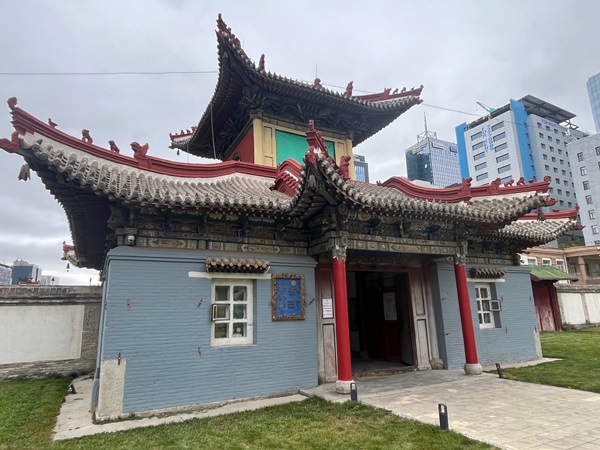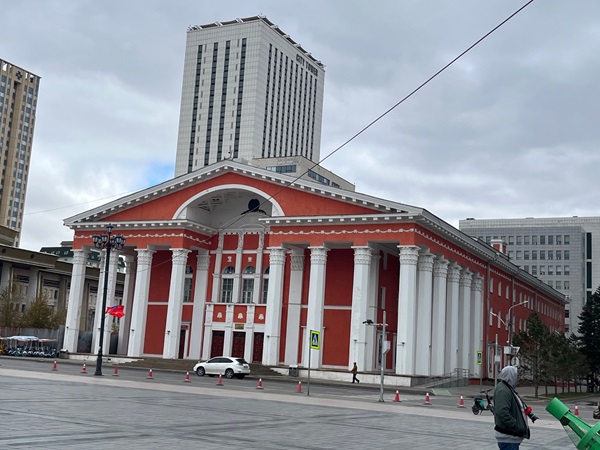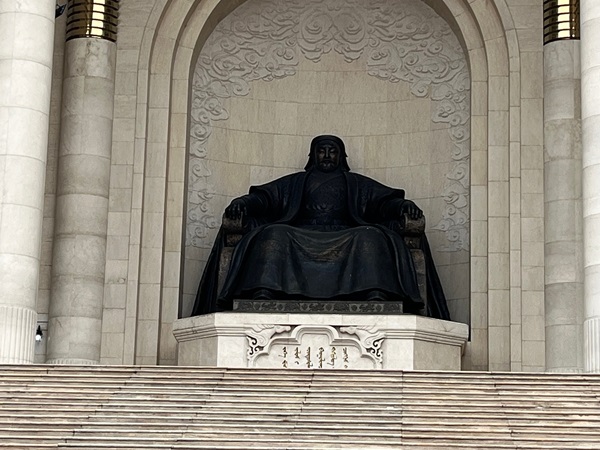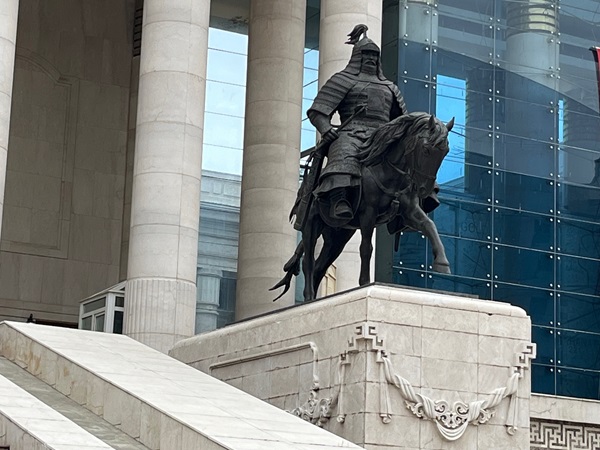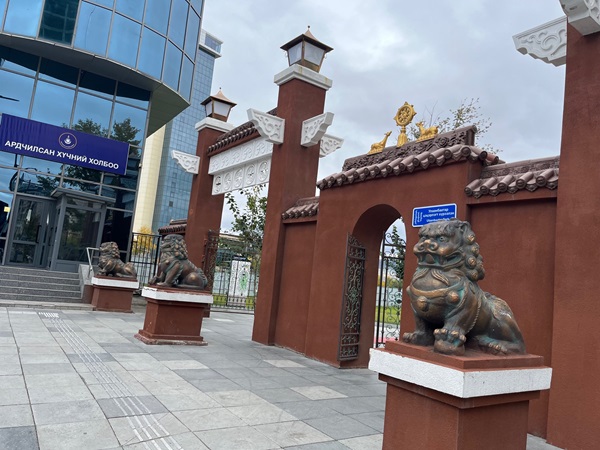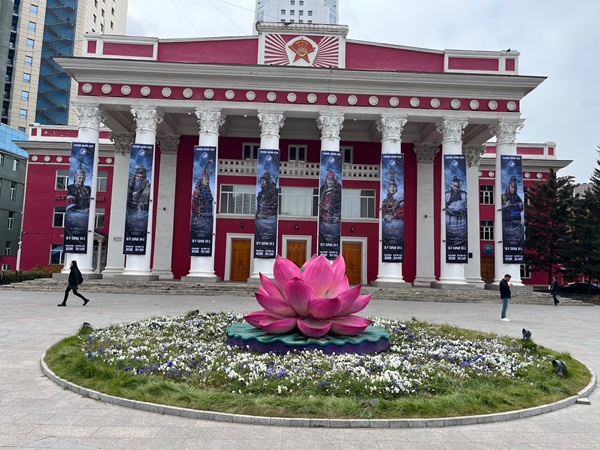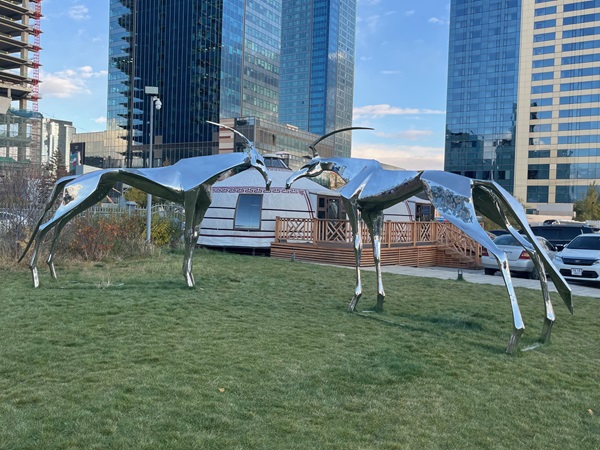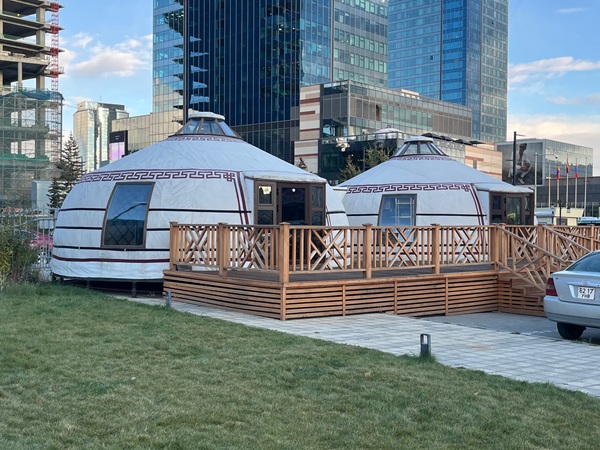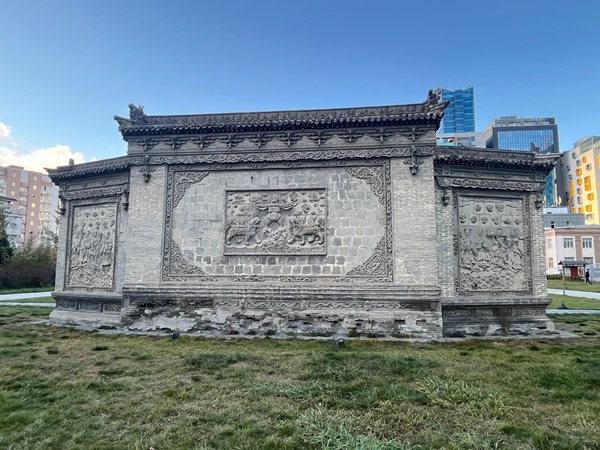 Ulan Bator Ibex sculpture;
Credit: Chronicle.lu
Ulan Bator Ibex sculpture;
Credit: Chronicle.lu
I recently got the unique opportunity to participate in a once-in-a-lifetime experience, to travel to Mongolia and not only visit the capital city, Ulan Bator / Ulaanbaatar, but also experience the northern wilderness there.
While the timing could have been different - it was shortly after the end of the British and Irish Film Festival Luxembourg 2024 Autumn Edition; after I had agreed to the specific dates I then had to plan two screenings of my documentary film "Luxembourg in America", only one of which I could attend in person - it was something I could not pass up.
There was a place on the last fishing camp of the season at Taimen Lodge on the Shishged river, where the quarry was Taimen, the largest of the salmonoid family, and Lenok trout. More on that later, but first a bit on the travel, the country, the capital city, the camp and the wildlife.
This, as I discovered, was a not a trip for the faint-hearted. Apart from being in civilisation in the capital city which needed to be explored and understood in its own right, first there was the trip to the camp, second there was the adaptation to living in the camp and, third, there was the experience of the fishing expeditions each day.
To make this more readable, I have split it into three: (a) the introduction, Mongolia and Ulan Bator; (b) travel (including the off-road adventure) and flora and fauna / wildlife; and (c) the camp and fishing.
Mongolia
The country of Mongolia is the 19th largest in the world with just over 1.5 million square kilometres surface area; land-locked, it is bordered by China to the south, west and east, and Russia (Siberia) to the north, with Kazakhstan almost touching its most westernmost point.
Its population is just 3.5 million, making it the world's most sparsely populated sovereign state (2.24 people/km2), with 50% of the population living in the capital city.
The country has the Gobi Desert to the south, and mountains to the north and west, with the rest described as grassland plains (steppes) and around 11% forested.
It is famous for Genghis Khan who founded the Mongol Empire in the early 13th century; Tibetan Buddhism spread to Mongolia in the 16th century (around 50% are practice Buddhism today), and it became independent (from China) in 1921, following which it became influenced by Russia and the Soviet Union. Just over 30 years ago it transitioned to a market economy.
Around 30% of the population are nomadic and live in gers (round structures covered by canvas and felt, and tethered by ropes; also known as yurts) which can be easily moved locations as their owners move their animal herds to different pastures depending on the season. Most of the country is hot in summers and extremely cold in winters, with January averages dropping as low as −30C (for us it dropped to just -10C).
Its alphabet is Mongolian Cyrillic, which looks like a blend of Russian and Turkish.
It uses the Togrog as currency (roughly 4,000 to €1); most shops and restaurants and cafés accepted credit cards without problem, with US dollars sometimes and alternative.
Economically, the country's main industry is agriculture (predominantly livestock/herding, employing one third of the workforce and representing 16% of GDP: the country also produces 20% of the world's raw cashmere), with mining emerging following the discovery of extensive mineral deposits (coal, gold, copper, etc.), now representing 21% of GDP. Almost 80% of exports go to China, with Korea and Japan also having strong economic interests in Mongolia.
Circling around the international airport, one could view some flat areas that had been adapted for growing cereals, with some greenhouses also established; I later learned that some agriculture farms have been established but much of their fruit and vegetables are imported.
Ulaanbaatar / Ulan Bator
The capital city was not the final destination, but it was interesting to visit and explore for a couple of days.
Staying near the main square (Sukhbaatar Square), it was good to get out for a stroll. There is plenty of neon advertising - not quite at the level of Japanese, Korean or other south-eastern Asian cities, more at a European level. Coffee shops are aplenty, and restaurants too, with a significant Korean influence.
Traffic on the roads was interesting, with well over half the vehicles being Toyota Priuses, and most of them were right-hand drive having been imported second-hand from Japan.
Traffic lights at junctions were often overridden by traffic police using light-sabre-like fluorescent red batons to direct the traffic and override the light signals, in a vain attempt to speed up traffic flows. This in turn resulted in pedestrian light being paused for what seemed like an eternity, but both pedestrians and motorists obeyed the traffic police. When waiting to cross, there were both green and red "men" illuminated across the pedestrian crossings; what were new here were colour-coded flashing lights embedded into the pavements just at the points of crossing.
With a law from the post-Soviet era, all Mongolian families are entitled to a small plot of land on which to pitch a ger; in the suburbs of the capital city, there is a large ger camp; on the drive in from the airport there are also "ger villages" where tourists can pay to experience living in a ger - I suspect they have modern toilet and wash facilities, though.
Like in other cities and countries where one has to adapt to climatic changes, for example to drink more fluids in more humid environments, the air in Mongolia is extremely dry, even more so outside the capital city, with moisturiser a necessity to protect from dry, itchy skin and rashes. I learnt the hard way.
The concept of tourist / souvenir shops and department stores are both alive in the capital city, with the State Department Store being recommended as a place to purchase quality (and not counterfeit) cashmere, woollen and yak hair products - it also has many top international clothing and other brands, and even a Villeroy and Boch section.
As for sights to see, apart from walking around the square as mentioned above, there is not much to see; however, I did get to visit the Choijin Lama Temple Museum. This Buddhist monastery complex (one of around 700 built in the country) was established in 1908 and has Chinese, Mongol and Tibetan influences, offering a glimpse into Mongolia's rich cultural heritage of the late 19th century and the early 20th century. It consists of six temples - it was originally a Buddhist temple complex, consisting of one main and five branch temples. In 1937 it was closed during the height of Communist repression against Buddhism and other religious traditions and, in 1938, it was re-established as a museum. The main temple features an 18th-century gilt statue of Buddha Sakyamuni and a collection of religious instruments, thangka paintings, silk embroideries, wood carvings, statues and cham dance masks.


